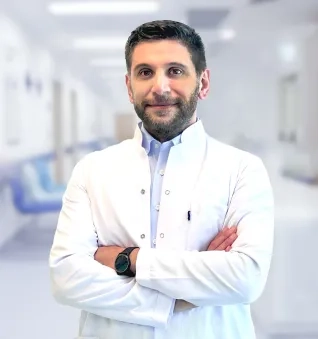Alo Yeditepe
Alo Yeditepe
The Effect of Advanced Age on IVF Treatment
Best reproductive ages for a woman are her twenties. Fertility gradually decreases in around 30 years of age and especially after the age of 35. Chance of pregnancy is 20 percent for a healthy, fertile woman at the age of 30 in every month she tries to get pregnant. This figure also implies that pregnancy is achieved by 20 out of 100 women at reproductive age, who try to get pregnant in a certain menstrual cycle and that other 80 women should try again in subsequent periods. At the age of 40, chance of a woman is less than 5 percent in each cycle. Therefore, less than 5 out of every 100 women are expected to be successful every month.
Egg Quality Decreases as the Number of Eggs Decreases
When women are in mid 30s, their chance of pregnancy decreases and risk of miscarriage increases, since the quality of eggs reduce along with a decline in number of eggs. Thus, age of a woman is the most accurate finding for egg quality. A significant change in quality of the egg is seen in the presence of genetic anomalies, called aneuploidy (too many or few chromosome in an egg). As a woman gets older, too many or few chromosomes exist in most of the eggs. This means that there will be too many or too few chromosomes in the embryo, if fertilization is achieved. Pregnancy may fail or otherwise, it may result in miscarriage, if an embryo has too many or too few chromosomes. This fact helps explain why pregnancy rates decrease and risk of miscarriage increases in women at advanced ages.
Decrease in follicles that contain oocytes in ovaries are called as "low ovarian reserve". As women are born with all follicles they are supposed to have, the follicle pool is slowly used throughout the lifetime. As ovarian reserve decreases, follicles become less sensitive to be stimulated by FSH; therefore, more stimulation is needed for an egg to mature. First, periods may approximate to each other and this may result in short cycles at 21 to 25 day intervals. Eventually, follicles cannot react well enough for continuous ovulation and this causes long, irregular cycles. Diminished ovarian reserve is generally related to age and it is caused by natural loss of eggs and decrease in average quality of remaining eggs.
What Are Methods That Increase Success of in Vitro Fertilization For Women at Advanced Age?
Preimplantation genetic diagnosis (PGD) is a novel technique that screens all chromosomes of an embryo and may detect potential abnormalities for this group of women to increase chance of pregnancy and give birth to a healthy newborn infant. Twenty four chromosomes of an embryo are screened in genetic laboratory, after several cells of the embryo are biopsied by the embryologist without any damage to the embryo, and thus, an embryo without any genetic abnormality is selected and transferred. This method increases chance of pregnancy, ensures the continuation of pregnancy and allows giving birth to a newborn infant with normal genetic features.
Ovaries should necessarily be evaluated in the baseline examination of these women. If ovarian volume is within acceptable ranges and there are follicles that may mature in ovaries or respond to a treatment, platelet rich plasma (PRP) is injected to ovaries and small follicles that are deemed dormant can be stimulated. Thus, it is possible to get oocytes with higher quality.
This content was prepared by Yeditepe University Hospitals Medical Editorial Board.
”
See Also
- What is Whooping Cough? The Importance of Whooping Cough Vaccination During Pregnancy
- Contraceptive Methods: Birth Control and Effective Protection Options
- What is Ovarian Reserve?
- Uterine Polyps, Symptoms and Treatment
- Genetic Diagnosis in IVF Treatment
- What Happens at 3rd Weeks of Pregnancy?
- What Happens at 2nd Week of Pregnancy?
- What is Endometriosis? What are the Symptoms of Endometriosis?
- What is Hormone Replacement Therapy (HRT)? How is HRT Performed?
- Hormonal Disorder Symptoms and Treatment
- What is Ureaplasma? How is Ureaplasma Treatment Done?
- What is Pelvic Floor? What are Their Duties?
- The Most Common Diseases in Women
- What is Hysteroscopy? Hysteroscopy Usage Areas
- What is Myoma? Myoma Symptoms and Treatment
- Early Menopause and Ovarian Failure Can Be Prevented
- What is Laparoscopic Surgery in Gynecology?
- Menopause Symptoms and Menopause Treatment
- Polycystic Ovary Syndrome and its Treatment
- Electromagnetic Stimulation in the Treatment of Endometriosis and Infertility
- How Does Working Life Affect Prospective Mothers?
- Causes of Female Infertility
- The Use of Non-Inpatient Closed Surgery is Increasing in Gynecological Diseases
- Chronic Pelvic Pain
- What is Polycystic Ovary Syndrome/PCOS?
- Postpartum Period
- 7 Effective Tips Against Urinary Incontinence
- What is Menopause? When Does Menopause Age Begin? What are the Symptoms of Menopause?
- The Chance of Becoming a Father Increases with Microchip Technology
- Thanks to the Ovarian Rejuvenation Method, She Counts the Days for Birth!
- Tests That Need to Be Performed During Pregnancy
- Which Tests Should Expectant Mothers Not Neglect? What Tests Should Be Done While Pregnant?
- Some Patients Go Through Menopause Even at the Age of 15
- Stress Disrupts the Menstrual Cycle
- Myomas Can Grow During Pregnancy
- Useful Bacteria Increases IVF Success
- Polycystic Ovary Syndrome Can Occur If the Bacteria in the Gut Are Not Functioning Well
- Imaging Methods During Pregnancy
- After 16 Years, She Wanted to Be a Mother Again; She Experienced the Shock of Her Life
- These Diseases Affect Women Differently Than Men
- Beware of Chocolate Cyst! It Affects 1 in 10 Women
- Causes of Male Factor Infertility
- Infertility
- Polycystic Ovary Syndrome
- Early Menopause
- Blocked Fallopian Tube
- Vaginismus
- Low Ovarian Reserve (AMH)
- Which Methods Increase Success in Treatment of Infertility?
- Intrauterine insemination (IUI)
- Microinjection
- Egg Cryopreservation
- Assisted Hatching
- Micro-chip
- Pre-implantation Genetic Diagnosis
- Thyroid Diseases During Pregnancy Affect the Baby as Much as the Mother
- Urinary Tract Infections Can Be A Sign Of Menopause
- 10 Overlooked Signs of Menopause
- Endometriosis
- Co-Culture
- Ovarian Rejuvenation / PRP
- As Average Life Expectancy Increases, This Problem Will Be Seen More
- 'Early Age' Warning for Egg Freezing Procedure
- Beware, These Risks Increase After Menopause!
- This Problem Ruins the Lives of One in Every 10 Women
- Getting Cancer Treatment Does Not Stop You from Having Children!
- Prof. Dr. Attar: Endometriosis Can Be Associated With Some Chronic Diseases
- What Is the Period of Fertility? What Tests are Performed for Fertility?
- What Happens at 38 Weeks of Pregnancy?
- What Happens at 37 Weeks of Pregnancy?
- What Happens at 36 Weeks of Pregnancy?
- What Happens at 35 Weeks of Pregnancy?
- What Happens at 34 Weeks of Pregnancy?
- What Happens at 33 Weeks of Pregnancy?
- What Happens at 32 Weeks of Pregnancy?
- What Happens at 31 Weeks of Pregnancy?
- What Happens at 30 Weeks of Pregnancy?
- What Happens at 29 Weeks of Pregnancy?
- What Happens at 28 Weeks of Pregnancy?
- What Happens at 27 Weeks of Pregnancy?
- What Happens at 26 Weeks of Pregnancy?
- What Happens at 25 Weeks of Pregnancy?
- What Happens at 24 Weeks of Pregnancy?
- What Happens at 23 Weeks of Pregnancy?
- What Happens at 22 Weeks of Pregnancy?
- What Happens at 21 Weeks of Pregnancy?
- What Happens at 20 Weeks of Pregnancy?
- What Happens at 19 Weeks of Pregnancy?
- What Happens at 18 Weeks of Pregnancy?
- What Happens at 17 Weeks of Pregnancy?
- What Happens at 16 Weeks of Pregnancy?
- What Happens at 15 Weeks of Pregnancy?
- What Happens at 14 Weeks of Pregnancy?
- What Happens at 13 Weeks of Pregnancy?
- What Happens at 12 Weeks of Pregnancy?
- What Happens at 11 Weeks of Pregnancy?
- What Happens at 10 Weeks of Pregnancy?
- What Happens at 9 Weeks of Pregnancy?
- What Happens at 8 Weeks of Pregnancy?
- What Happens at 7 Weeks of Pregnancy?
- What Happens at 6 Weeks of Pregnancy?
- What Happens at 5 Weeks of Pregnancy?
- What Happens at 4 Weeks of Pregnancy?
- What Happens at 1st. Weeks of Pregnancy?
- Considerations for Embryo Transfer
- What Causes Menstrual Irregularity, How Is It Treated?
- Success in IVF after 43 Decreases to Five Percent
- Does Pregnant Coronaviruses Affect?
- Most Frequently Asked Questions During Pregnancy
- Untreated Genital Problems Can Cause Urinary Incontinence
- 1 in 10 Women Have This Problem; It Can Lead To Infertility
- Effective Results Can Be Achieved with PRP in Women with Low Egg Count
Alo Yeditepe









